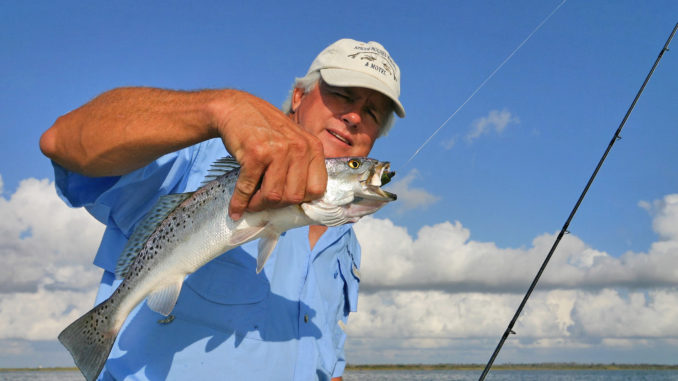
Gulf Coast’s largest boat show opens to thousands of attendees at 5 p.m.
While nobody would consider the Calcasieu Lake trout bite fast and furious at the moment, Captain Norman Rester with A-Speck Charters (337-884-0656) says that there has been enough action to keep things interesting. And the couple of 6-pounders that made it into his boat the end of last week has kept him coming back for more.
“We’ve been getting pretty easy limits of reds,” Rester said, “but we’re not catching as many trout. I think they’re a little slower biting because of the cold. But the trout we are catching are good solid fish. The first one I landed on a trip the end of last week was 6 1/4, and one of the guys on my boat landed a 6 later that same day.”
Rester’s next trip produced only 12 reds and 12 trout, as they were a little more selective in what they kept. However, about five of those 12 trout were around four pounds. So if the bite is somewhat slow, the sizes of the trout are more than making up for the lack of fast action.
“We’re fishing a pretty basic January pattern,” Rester went on. “Our best bite has been on pearl/chartreuse Norton Sand Eels fished on 1/8-ounce jigheads over the flats. I think the key is that there’s not much for them to eat right now because there is very little bait in the water. If you fish the shallow water near the edge of the Ship Channel, you’ll find some hungry fish.”
Although Rester has had his best success on the pearl/chartreuse Sand Eel, he added that other anglers aboard his boat were getting bit on black/chartreuse. In fact, his big trout came on pearl/chartreuse while the other one came on the black/chartreuse. That’s why he recommended keeping both handy.
Rester believes one of the keys to his bite the last few days is that he’s fishing his Sand Eel a little bit differently than what he imagines other anglers are. Rather than crawling it slowly on the bottom, he’s ripping it pretty quickly over oysters in 2 to 3 feet of water.
“I’m making as long a cast as I can using 10-pound test monofilament,” he explained. “As soon as my bait hits the water, I crank in the slack and jerk my rod back over my head with 6- to 8-foot jerks. Since I’m moving my rod that far, it means my bait is moving 6 to 8 feet, too. That’s kind of unusual for this time of year.”